

/en/powerpoint2013/lists/content/
Indentation and line spacing are two important features you can use to change the way text appears on a slide. Indentation can be used to create multilevel lists or to visually set paragraphs apart from one another. Line spacing can be adjusted to improve readability or to fit more lines on the slide
Indenting helps to format the layout of text so it appears more organized on your slide. The fastest way to indent is to use the Tab key. An alternative method of creating an indent is to use one of the Indent commands. With these commands, you can either increase or decrease the indent.
 An indent created with the Tab key
An indent created with the Tab key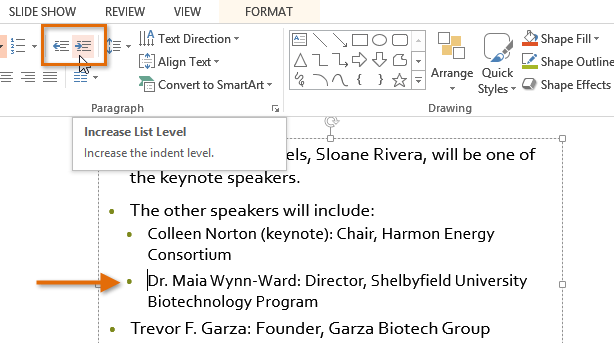 An indent created with the Increase Indent command
An indent created with the Increase Indent commandTo decrease an indent, select the desired line, then press Shift+Tab.
Indenting will give different results, depending on whether you are working with a list or a paragraph:
 A multilevel list
A multilevel list A first line indent
A first line indentOnce you've created a multilevel list, you may want to choose a different bullet style for different levels of the list to make them stand out even more.
 A multilevel list
A multilevel list
Sometimes you may want to fine tune the indents in your presentations. You can do this by adjusting the indent markers on the ruler. By default, the ruler is hidden, so you'll first need to show the ruler.
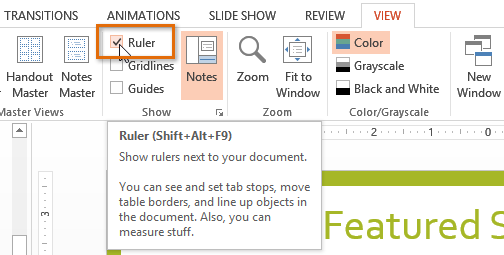 Showing the ruler
Showing the rulerIndent markers are located to the left of the horizontal ruler, and they provide several indenting options:
 : Adjusts the first line of a paragraph
: Adjusts the first line of a paragraph : Adjusts every line of a paragraph except for the first line
: Adjusts every line of a paragraph except for the first line : Moves both the first-line indent and hanging indent markers at the same time; this will indent all lines in a paragraph
: Moves both the first-line indent and hanging indent markers at the same time; this will indent all lines in a paragraph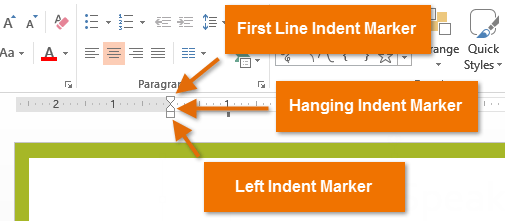 The three indent markers
The three indent markers Moving a paragraph
Moving a paragraph An indented paragraph
An indented paragraphWhen working with lists, PowerPoint allows you to adjust the space between a bullet and the text by using the first-line indent marker or the hanging indent marker. The ability to increase and decrease the indentation allows you to customize lists to meet your needs.
 Moving bullets
Moving bulletsPowerPoint allows you to adjust the amount of space between each line in a list or paragraph. You can reduce the line spacing to fit more lines on a slide, or you can increase it to improve readability. In some instances, PowerPoint may automatically change the font size when you adjust the line spacing, so increasing the line spacing too much may cause the text to be too small.
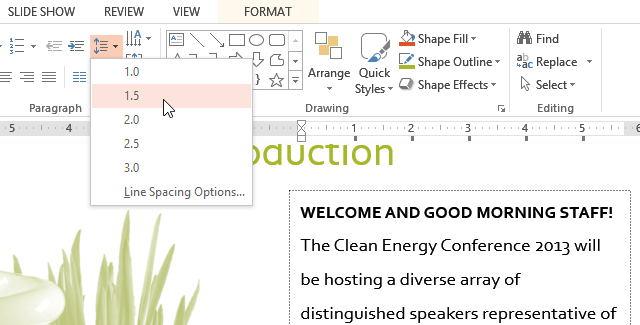 Changing the line spacing
Changing the line spacingIf you want to adjust the line spacing with even more precision, select Line Spacing Options from the drop-down menu. The Paragraph dialog box will open, allowing you to fine-tune the line spacing and also adjust the paragraph spacing, which is the amount of spacing that is added before and after each paragraph.
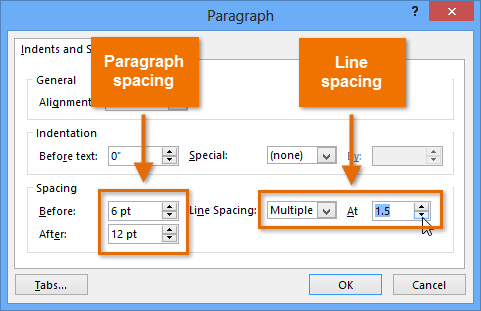 The Paragraph dialog box
The Paragraph dialog box/en/powerpoint2013/inserting-pictures/content/